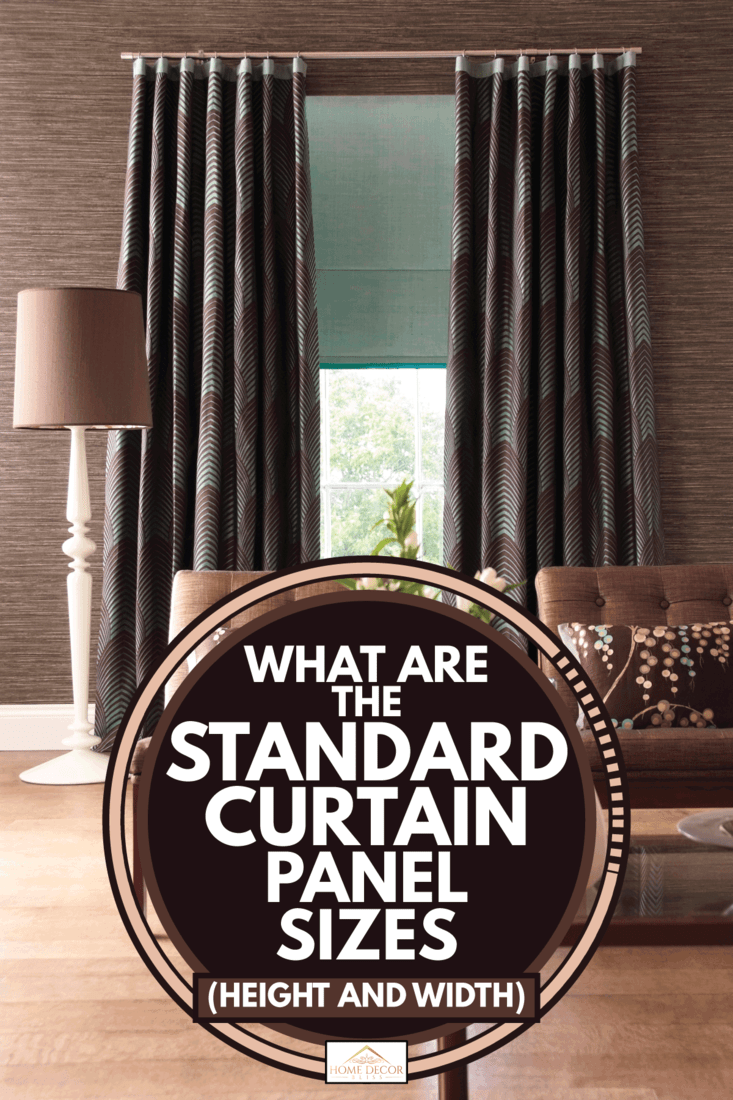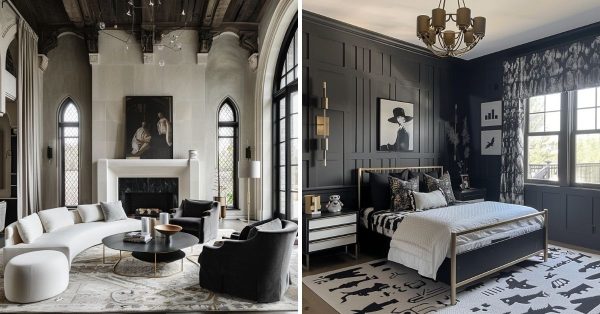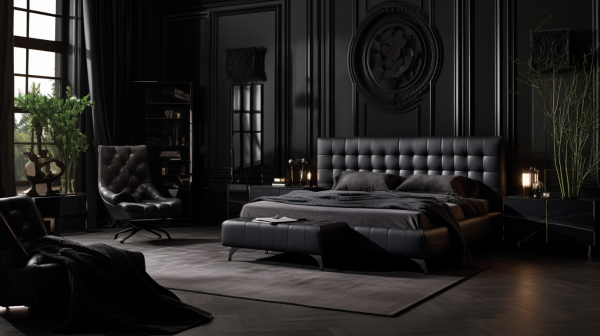Picking out curtain panels is an incredibly daunting task. While it's easy to measure your window's size and run to the store, once you arrive and find that window panels don't come in the same sizes as windows do, it can be a little disheartening. Measuring for the proper size panels is imperative. Keep in mind that window sizing and curtain sizing is a bit different from one another.
Curtains generally come in a couple of standard sizes, depending on the type of curtain you are using.
- Curtain panels: 63, 84, 95, 108, and 120 inches long and 48 inches wide.
- Tier curtain panels: 24 and 36 inches long with widths varying in size, but the most common width is 45 inches.
- Valance curtains: 50 inches wide and anywhere from 3 to 5 inches deep.
Choosing the right style curtain and the proper size can be a bit challenging. Understanding what kind of curtain you are looking for and how you'd like it to sit on your window will help immensely with the process. Below is some information on the different kinds of panels you can select and what windows they work best to cover.
![Collaged photo of different living rooms, What Are The Standard Curtain Panel Sizes? [Height and Width]](https://homedecorbliss.com/wp-content/uploads/2020/12/What-Are-The-Standard-Curtain-Panel-Sizes-Height-and-Width.png)
Standard Curtain Panels
When purchasing a ready-made curtain panel, selection in size is limited to the most common sizes used. These sizes are 63, 84, 95, 108, and 120 inches long and 48 inches wide. Standard curtains come in various designs, from a solid color or a solid type of fabric to black-out curtains to sheer curtains. Typically, if it is a ready-made curtain panel, the sizes will be the same regardless of what design or style it is. The only exception to this sizing rule is if you choose to have your curtain panels custom made. In this case, there is not a standard size, as they will be made to your exacting specifications.
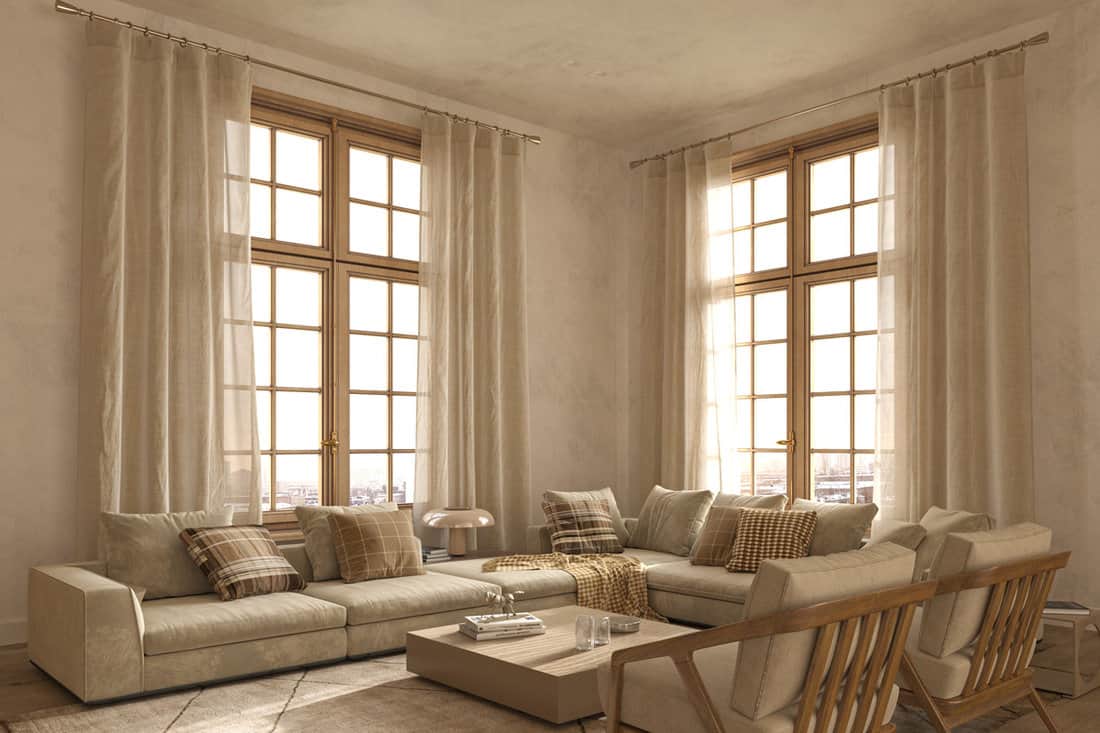
We may include affiliate links and curated AI content to highlight top design styles.
Standard curtain panels work great for covering any standard window within your home. You'll see this often on living room windows, bedroom windows, and perhaps on bathroom windows depending on the size. Using ready-made sized panels is convenient and easy, as well as versatile. You can choose the number of panels you slide on one curtain rod. The more panels you add, the fuller the look you will create. There is also a great option with these kinds of curtains to layer a sheer curtain layer with a blackout curtain layer for a gorgeous look but practical use.
Standard Tier Curtains
Tier curtains are generally found on windows that are slightly smaller or don't need to be covered completely. A tier curtain will typically cover the bottom half of a window, which works wonderfully on windows above a kitchen sink. You could potentially use this curtain style in the bathroom as well, depending on the window's placement and size. These curtains come in two different lengths, 24 and 36 inches, and the most common width is 45 inches for ready-made tier curtains. As discussed with standard curtain panels, you can have them made to your specific measurements if you choose to have these custom made.
Check out our article showing you 10 types of kitchen curtains you’ll want to know about!
Click here to check out these Buffalo Check Kitchen Window curtains on Amazon!
Standard Valance
A valance is a style of curtain that covers the upper portion of the window. The standard size for a valance is 50 inches wide and about 3 to 5 inches deep, depending on the style and design. It is popular when a full curtain set up is unnecessary, such as in a bay window or a window with other privacy coverings.
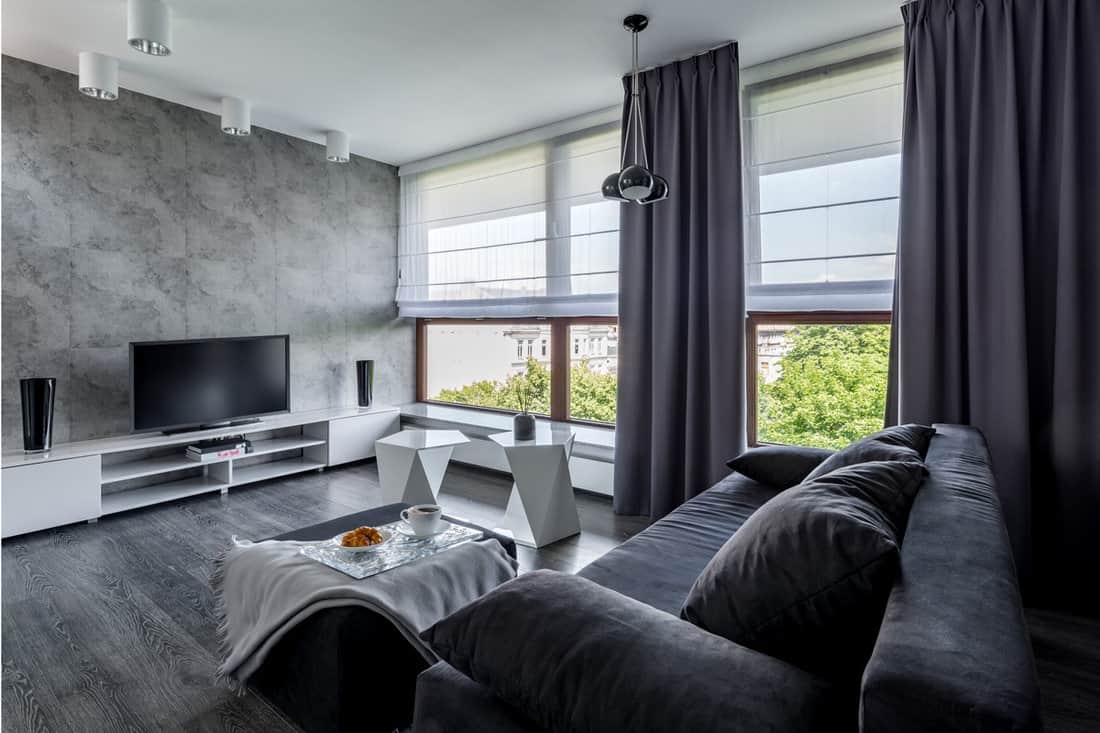
Since the object of a bay window is often to create a bit of an outward, additional space to display a bay window, sometimes full curtains will take away from this prominent feature. A great alternative is to use a valance. This can be added for design and to hide privacy screens, shades, or blinds. You should also check out our article on the best type of curtains to use for bay windows.
Click here to see this window valance on Amazon!
What length curtain do I choose?
There are three main ways to classify proper curtain length. Which one you decide to go with is up to your personal style.
Puddling Length
This is when the curtains flare out at the bottom onto the floor. They make a “puddle” of the curtain on the floor below. This is often used for heavy and formal curtains.
Kiss Length
This is when the curtains will barely kiss the floor. Keep in mind that as nice as this method looks, it takes exact measurements. You’ll also want to ensure you consider the method you hang the curtain and the hardware you choose to use. These can all impact where the base of the curtain lands and can make or break a “kiss” style.
Floating Length
The curtains at this length can be hung in two different ways. You can hang floating length to hover right above the floor, averaging about 1 inch before the curtain meets the floor, or you can choose to hang curtains that fall just below the window itself. This will float a bit more off the floor, depending on the placement of your window.
How do you measure for curtain panels?
Pick the spot where you’d like the hardware to be fastened.
Hardware can be placed inside or outside of the “mount.” When hanging curtains inside the mount, the curtains will hang inside the window opening. In this case, you want to keep the hardware as close to the window frame as you can. For an outside mount, your curtains will hang around the windows. This generally is the most common when looking for a sleek and stylish design. An outside mount can make the window feel larger as well.
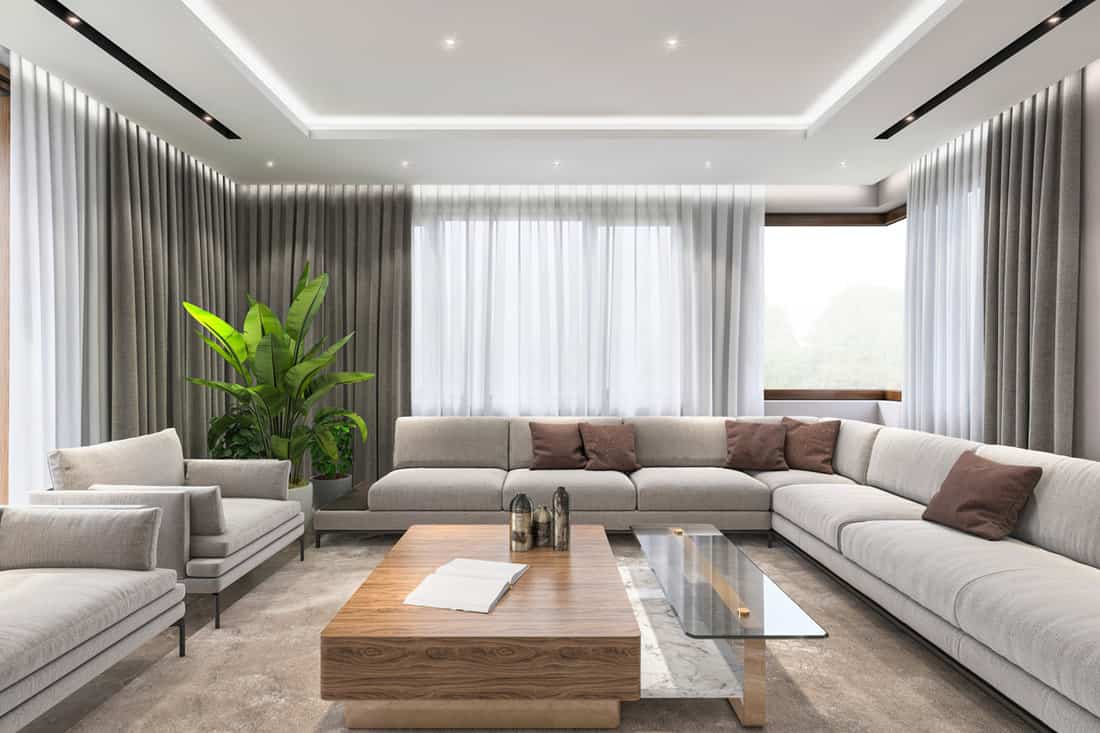
Measure the width of your window
A good rule-of-thumb is to add 12 inches on each side of the window width or 24 inches to the total width. This will provide you with enough slack in the panels to ensure that the curtains cover the window completely when closed. Here you can also decide how many panels you’d like to put up. It’s common for standard windows to see only 2, but if you have a larger window, you’d like a full appearance, or you’re going for a layered effect, you could use 4 or even 6 panels.
Once you know how many panels divide the number of panels by the adjusted width of the window. For example, if your window is 60 inches wide, first add 24. This equals 84 inches. Let's say you want 2 panels to cover your window, so divide 84 by 2. This equals 42. You now know that you need your panels to be at least 42 inches wide.
Measure the length
Since you know where you plan to place your hardware, you’ll want to measure from the spot where you’d hang the rod to the lowest place you’d like the fabric to hang.
Once you know how long you want your curtains to hang, and you’ve calculated the width of the panels you need, you can feel confident in making your curtain purchase! You can also check out our article about curtains and their need for a pair!
What is a standard size curtain rod?
Curtain rods come in a variety of lengths. The most common lengths available in local home improvement stores are 28 to 48 inches, 48 to 84 inches, 66 to 120 inches, and 120 to 170 inches. To help you select the perfect curtain rod for your needs, read our article on 3 imperative things you must check.
Click here to see this versatile curtain rod on Amazon!
Do curtains have to touch the floor?
As a general rule, most interior designers will tell you that floor-length curtains will provide the classiest look. As mentioned above, there are a few ways to classify floor-length, so ultimately, where they land will heavily depend on the look you want. Some exceptions, such as a kitchen or bathroom, generally will not have curtains that touch the floor. Be sure to read more about this by checking out our article on this exact question!
Do Tier curtains cover the entire window?
Tier curtains are designed only to cover the lower half of the window. The rod is placed at the center of the window, and the curtain will end at the sill.
In closing

There indeed is a lot more involved than just knowing the size of your window when it comes to picking out the proper size window coverings. Knowing what look you’re going for and taking proper measurements are imperative. Standard size curtains should fit most of your needs, but there is an option to have custom made window coverings. These are a pricier option, but they will always be exactly made to your specifications. Window coverings come in all shapes and sizes and are made out of many different types of material. If you ultimately decide that curtains won't work in the space you’re looking to decorate, check out our article, which gives a variety of non-curtain window coverings that are gorgeous!
